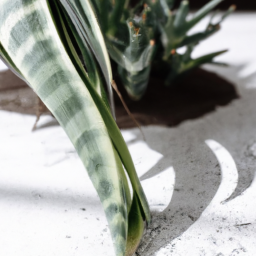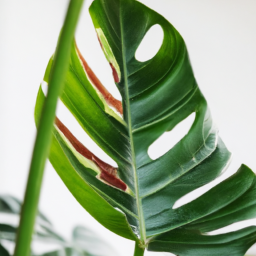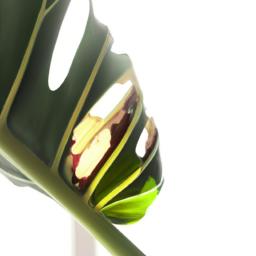
Are you tired of the same old houseplants that everyone seems to have? Looking to add a touch of uniqueness and intrigue to your indoor space? Well, you’re in luck! In this blog post, we will be exploring exotic indoor plants that are sure to bring a breath of fresh air into your home. From vibrant foliage to unusual shapes and textures, these plants will not only beautify your living space but also spark conversation among your guests. So, let’s embark on a journey of discovery as we delve into the world of exotic indoor plants and uncover some hidden gems that will transform your home into a tropical oasis.
Benefits of Growing Exotic Indoor Plants
Indoor plants not only add beauty and vibrancy to our living spaces but also offer numerous benefits for our overall well-being. While there are many common indoor plants that are popular choices, exploring exotic indoor plants can take your indoor gardening experience to a whole new level. In this article, we will delve into the benefits of growing exotic indoor plants and how they can enhance your indoor environment.
Improved Air Quality
One of the primary benefits of growing exotic indoor plants is their ability to improve air quality. Exotic plants, just like their common counterparts, absorb carbon dioxide and release oxygen through the process of photosynthesis. However, certain exotic plants have the added advantage of being highly efficient in purifying the air by removing harmful toxins and pollutants. Some popular exotic plants renowned for their air-purifying properties include the Snake Plant, Peace Lily, and Boston Fern.
Moreover, these exotic plants can also help regulate humidity levels indoors. They release moisture into the air through a process called transpiration, which can be particularly beneficial in dry environments or during the winter months when indoor air tends to be drier. By improving air quality and maintaining optimal humidity levels, exotic indoor plants contribute to a healthier and more comfortable living space.
Furthermore, research has shown that indoor plants, including exotic varieties, can reduce the presence of airborne molds and bacteria. This can have a positive impact on respiratory health, reducing the risk of allergies and respiratory illnesses.
Enhanced Mental Well-being
Another significant benefit of growing exotic indoor plants is their positive impact on mental well-being. Studies have consistently demonstrated that having indoor plants can reduce stress, anxiety, and depression. Exotic plants, with their unique and captivating features, can create a sense of tranquility and provide a visual escape from the demands of daily life.
The presence of indoor plants has also been linked to improved concentration and productivity. Research suggests that being in the vicinity of plants can enhance cognitive function and memory retention. This is particularly relevant in indoor environments such as offices, where the presence of exotic indoor plants can create a more conducive and stimulating work environment.
In addition, caring for exotic indoor plants can be a rewarding and therapeutic activity. The act of nurturing plants and watching them thrive can instill a sense of purpose and accomplishment, boosting self-esteem and overall happiness.
Aesthetic Appeal and Unique Décor
Exotic indoor plants offer a wide array of unique shapes, colors, and textures that can transform any indoor space into a captivating oasis. These plants often feature intricate foliage patterns, vibrant blooms, or unusual growth habits that add an element of intrigue and beauty to your home or office.
Whether you opt for a towering Monstera Deliciosa, a cascading String of Pearls, or a dramatic Bird of Paradise, exotic indoor plants can serve as stunning focal points and conversation starters. They can be displayed in various ways, such as hanging planters, terrariums, or as standalone statement pieces, allowing you to unleash your creativity and personalize your indoor space.
Furthermore, incorporating exotic indoor plants into your décor can create a sense of connection with nature, even in urban environments. The presence of greenery indoors has been shown to reduce feelings of isolation and promote a sense of tranquility and well-being.
In conclusion, exploring exotic indoor plants offers a multitude of benefits for both our physical and mental well-being. From improving air quality and purifying the environment to enhancing our mental well-being and adding aesthetic appeal to our living spaces, these plants truly have the power to transform our indoor environments. So why not embark on a journey of discovering and nurturing exotic indoor plants and unlock the wonders they can bring into your life.

Popular Exotic Indoor Plants for Beginners
Indoor plants not only add beauty and freshness to your living space but also provide numerous health benefits. If you’re a beginner looking to explore the world of exotic indoor plants, you’ve come to the right place. In this guide, we will introduce you to some popular and easy-to-care-for exotic plants that are perfect for beginners.
1. Snake Plant
The Snake Plant, also known as Sansevieria or Mother-in-Law’s Tongue, is a popular choice among indoor plant enthusiasts. This plant is known for its striking tall, sword-like leaves that come in various shades of green. It is a low-maintenance plant that can tolerate a wide range of light conditions, making it ideal for beginners.
Snake Plants are excellent air purifiers, removing toxins such as formaldehyde and benzene from the air. They are also known for their ability to convert carbon dioxide into oxygen at night, making them perfect for bedrooms. To care for a Snake Plant, place it in a well-draining potting mix and water it sparingly, allowing the soil to dry out between waterings.
2. ZZ Plant
The ZZ Plant, scientifically known as Zamioculcas zamiifolia, is another popular choice for beginners. It has glossy, dark green leaves that grow in a graceful, upright manner. The ZZ Plant is highly tolerant of neglect and can survive in low-light conditions, making it an ideal indoor plant for those with limited sunlight.
This plant is native to drought-prone regions of Africa, so it has adapted to store water in its rhizomes, making it drought-tolerant. It is best to let the soil dry out between waterings to prevent overwatering. The ZZ Plant is also known for its air-purifying properties, making it a great addition to any indoor space.
3. Chinese Money Plant
The Chinese Money Plant, also known as Pilea peperomioides, is a trendy and unique plant that is easy to care for. It features round, pancake-shaped leaves that grow on long, thin stems. This plant is native to the Yunnan Province in China and is believed to bring good luck and prosperity.
The Chinese Money Plant prefers bright, indirect light and well-draining soil. It is important not to overwater this plant, as it is susceptible to root rot. Allow the top inch of soil to dry out before watering. With its attractive foliage and ease of care, the Chinese Money Plant is a great choice for beginners.
Conclusion
Exploring exotic indoor plants can be a rewarding and enjoyable experience for beginners. The Snake Plant, ZZ Plant, and Chinese Money Plant are just a few examples of popular and easy-to-care-for options. Remember to consider the lighting conditions and watering needs of each plant before bringing them into your home. With proper care and attention, these exotic indoor plants will thrive and add a touch of nature to your living space.

Tips for Caring for Exotic Indoor Plants
Introduction
Welcome to the wonderful world of exotic indoor plants! Whether you are a seasoned plant enthusiast or just starting your indoor gardening journey, exploring exotic indoor plants can be a rewarding and exciting experience. These unique plants not only add a touch of beauty to your living space but also bring a sense of tranquility and freshness to your home. In this guide, we will walk you through some essential tips for caring for your exotic indoor plants, ensuring they thrive and flourish in your indoor environment.
Understanding the Needs of Exotic Indoor Plants
Exotic indoor plants come from various regions around the world, each with its own specific environmental requirements. To ensure the health and vitality of your exotic indoor plants, it is crucial to understand their unique needs and provide the right conditions for their growth.
Lighting: Most exotic indoor plants thrive in bright, indirect light. They are accustomed to the filtered light that penetrates through the dense canopies of their natural habitats. Place your plants near a window that receives bright, indirect sunlight for several hours a day. Avoid exposing them to direct sunlight as it can scorch their delicate leaves.
Temperature and Humidity: Exotic indoor plants often prefer warm and humid conditions, mimicking their native environments. Maintain a temperature range between 65-85°F (18-29°C) and humidity levels around 50-60%. You can increase humidity by placing a tray filled with water near your plants or using a humidifier.
Watering and Feeding
Watering: Proper watering is essential for the well-being of your exotic indoor plants. However, it’s important to avoid overwatering, as it can lead to root rot and other moisture-related issues. Before watering, check the moisture level of the soil by inserting your finger about an inch deep. If it feels dry, it’s time to water your plant. Use room temperature water and ensure thorough drainage by allowing excess water to escape through the drainage holes at the bottom of the pot.
Feeding: Exotic indoor plants have specific nutritional requirements to support their growth. Use a balanced, water-soluble fertilizer formulated for indoor plants and follow the instructions on the packaging for the correct dosage. During the growing season, typically spring and summer, feed your plants every two weeks. In the dormant season, reduce feeding to once a month.
Pest Control and Maintenance
Pest Control: Just like any other plants, exotic indoor plants are susceptible to pests such as aphids, spider mites, and mealybugs. Regularly inspect your plants for any signs of infestation, such as yellowing leaves, sticky residue, or tiny webs. If you notice pests, treat them promptly with organic insecticidal soap or neem oil, following the instructions on the product label. Additionally, practicing good plant hygiene by removing dead leaves and debris helps prevent pest infestations.
Maintenance: To keep your exotic indoor plants looking their best, regular maintenance is necessary. This includes pruning to remove dead or damaged leaves, repotting when the plant outgrows its container, and dusting the leaves to allow optimal light absorption. Remember to use clean, sharp tools for pruning and choose a well-draining potting mix when repotting.
Conclusion: Caring for exotic indoor plants requires a bit of knowledge and attention, but the rewards are well worth the effort. By understanding their specific needs and providing the right care, you can create a thriving indoor oasis filled with the beauty of these unique plants. So go ahead, explore the world of exotic indoor plants, and let their vibrant colors and fascinating forms transform your living space into a tropical paradise!
Here’s the Summary Snapshot
Indoor plants have become a popular addition to home décor, bringing a touch of nature and beauty indoors. While we are familiar with the classic houseplants like ferns and succulents, there is a whole world of exotic indoor plants waiting to be explored. These unique plants not only add a sense of adventure to your space but also offer a range of benefits, from purifying the air to promoting relaxation and reducing stress.
One fascinating exotic indoor plant worth considering is the Monstera Deliciosa, also known as the Swiss Cheese Plant. Its large, glossy leaves with distinctive holes give it a striking appearance, instantly transforming any room into a tropical paradise. Not only is it aesthetically pleasing, but this plant is also known for its air-purifying qualities, removing harmful toxins from the air and creating a healthier living environment. Another intriguing option is the Calathea Orbifolia, a plant with stunning, broad leaves featuring intricate patterns. With its ability to thrive in low-light conditions, it is perfect for those with less sunlight in their homes. This plant not only adds a touch of elegance but also helps to improve air humidity, making it an excellent choice for spaces that tend to be dry.
Exploring exotic indoor plants is a delightful way to bring a sense of adventure and beauty into your home. With their unique features and various benefits, these plants are sure to captivate your attention and enhance the ambiance of any space. So, why not embark on a journey of discovery and add a touch of exoticism to your indoor oasis?
Here are the top questions that we were asked:
Q1: What are some popular exotic indoor plants to explore?
A1: There are several popular exotic indoor plants that you can explore to add a touch of uniqueness to your indoor space. Some examples include the Monstera Deliciosa, also known as the Swiss Cheese Plant, with its large, fenestrated leaves; the Fiddle Leaf Fig, known for its tall and elegant appearance; and the Snake Plant, which is known for its ability to purify the air.
Q2: How do I care for exotic indoor plants?
A2: Caring for exotic indoor plants requires some specific attention. Generally, they thrive in well-draining soil, so make sure to use a suitable potting mix. They also prefer indirect sunlight, so placing them near a window with filtered light is ideal. Additionally, regular watering is necessary, but be cautious not to overwater as it can lead to root rot. Lastly, keep an eye out for any pests and diseases, and address them promptly.
Q3: Can I grow exotic indoor plants in low-light conditions?
A3: While many exotic indoor plants prefer bright, indirect light, there are some options that can tolerate low-light conditions. Plants like the ZZ Plant, the Cast Iron Plant, and the Peace Lily are known to thrive in low-light environments. However, it’s important to note that even these plants still require some amount of light to survive, so it’s best to place them near a window or provide artificial light if natural light is scarce.
Q4: How do I propagate exotic indoor plants?
A4: Propagating exotic indoor plants can be a rewarding experience. Most plants can be propagated through stem cuttings or division. For stem cuttings, simply take a healthy cutting from the parent plant, remove any lower leaves, and place it in water or a well-draining potting mix until roots develop. Division involves separating a mature plant into smaller sections, each with its own roots. It’s important to follow specific propagation instructions for each plant species, as some may require additional steps or care.
Q5: Are exotic indoor plants safe for pets?
A5: While many exotic indoor plants are safe for pets, there are some that can be toxic if ingested. It’s crucial to research the specific plant species you’re interested in and ensure it is pet-friendly. Some common pet-friendly options include the Boston Fern, Spider Plant, and Areca Palm. If you have pets, it’s best to keep any potentially toxic plants out of their reach or opt for non-toxic alternatives to ensure their safety.
Dr. Olivia Green is a botanist with over two decades of experience in indoor plant cultivation. She holds a Ph.D. in Plant Biology and has dedicated her career to researching plant behavior in controlled environments. Dr. Green is passionate about helping plant enthusiasts master the art of indoor gardening through her extensive knowledge and practical insights.


